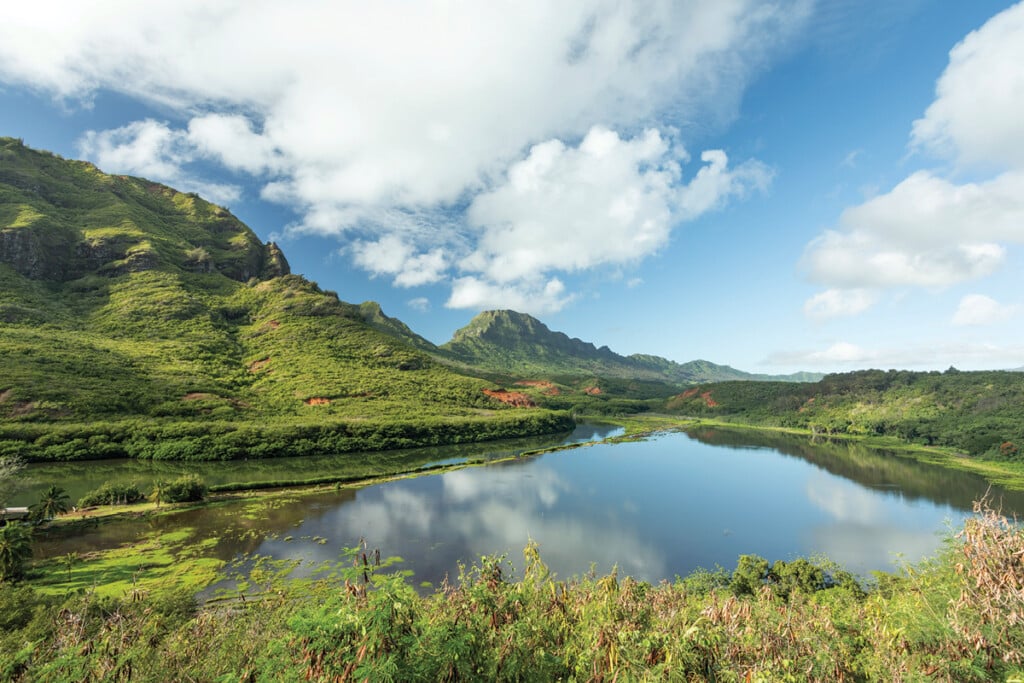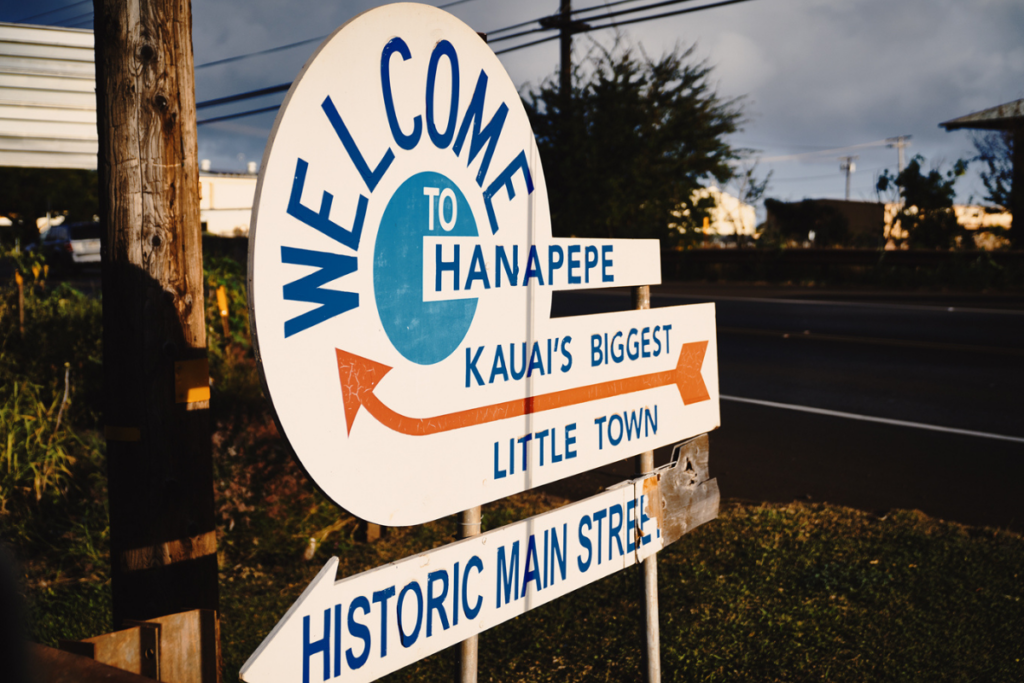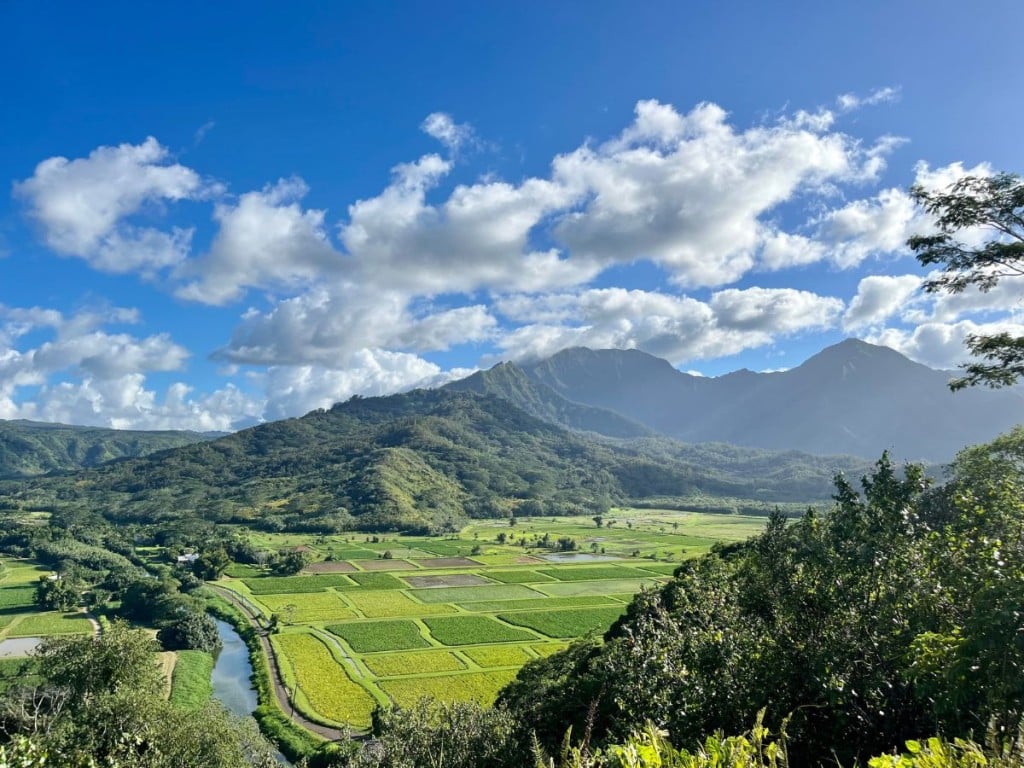Mālama: Safeguarding the Future of Alakoko, Kauaʻi’s Ancient Fishpond
This 600-year-old Hawaiian fishpond on Kaua‘i’s southwest coast is one of the most endangered historic places on the island.

The first time I learned about the Alakoko Fishpond on Kaua‘i was back in 2012, when I hopped on a stand-up paddleboard on the Hulē‘ia River and glided right past it. Back then it was referred to as the Menehune Fishpond, named after the legendary craftsmen who worked at night, building heiau (temples) and fishponds.
But beyond that, I knew nothing.
It wasn’t until almost a decade later that I realized its history and significance.
It was 2021, and the 600-year-old fishpond, considered one of the most significant examples of aquaculture on Kaua‘i, was up for sale.
The Okada family, which had owned the land since 1986, listed the two parcels upon which the fishpond sits for $3 million. For two years prior the nonprofit Mālama Hulē‘ia had been acting as stewards of the land, clearing over 26 acres of invasive red mangrove with the goal of restoring the fishpond. It had a 20-year lease agreement to use one of the parcels.
The nonprofit worked with the Trust for Public Land to buy the property and save the fishpond, which has been listed on the U.S. National Register of Historic Places since 1973 and, in 2009, was designated as one of Hawai‘i’s most endangered historic places by the Historic Hawai‘i Foundation.
“Alakoko Fishpond is one of the finest remaining examples of an inland loko kuapā (brackish water walled fishpond) in all of Hawai‘i,” explains Mālama Hulē‘ia executive director Sara Bowen, who first become involved in the nonprofit in 2015. “It is a critical piece of Kaua‘i’s cultural and historical landscape, reflecting the advanced aquaculture and resource management systems of Native Hawaiians. Beyond its cultural significance, the fishpond plays a vital role in maintaining a healthy wetland ecosystem, providing habitat for native fish, limu (seaweed) and endangered Hawaiian water birds. Restoring and protecting Alakoko ensures that future generations can continue to learn from and engage with this unique example of Hawaiian ingenuity.”
There was a time in Hawai‘i when nearly 500 fishponds—or loko i‘a—produced an estimated 2 million pounds of fish and seafood per year. These fishponds were a unique part of an integrated aquaculture and ecosystem managed by the community within an ahupua‘a, a division of land stretching from the uplands to the ocean. There were different types of fishponds, ones that grew taro and were stocked with freshwater fish and others lined with rock walls built along the coastlines that trapped fish like mullet (‘ama‘ama) and milkfish (awa). Alakoko is a brackish-water fishpond (loko pu‘unone), which means it has both freshwater from Hulē‘ia River and ocean water. It was encircled by a 2,700-foot-long kuapā (rock wall); within it grew fish and limu.
Today, about 90% of these ancient fishponds are gone, and the remaining—like Alakoko—are in various stages of restoration.
One of the best examples of a restored Hawaiian fishpond is the He‘eia Fishpond, a kuapā-style fishpond that encloses 88 acres of brackish water on O‘ahu’s Windward Side. Built by residents of the area, it’s estimated to be around 800 years old. Its wall—possibly the longest in the Hawaiian Islands, measuring about 1.3 miles—makes a complete circle around the fishpond, which is unusual. (Most other fishponds in Hawai‘i had walls that either formed a straight line or semicircle, connecting one point of shoreline to another.) Restoration efforts began in the 1990s and, today, the fishpond is thriving. People can visit the fishpond—the nonprofit stewards at Paepae o He‘eia offer hourlong guided walking tours—or volunteer to help with ongoing restoration efforts.
Alakoko Fishpond is one of the last remaining fishponds on Kaua‘i. (Nōmilu Fishpond on the southwest shore of the island is one of the oldest in the state and is owned by Kaua‘i Sea Farm.) At one time at least six fishponds were in operation in this area around Nāwiliwili Bay, where food crops flourished along the many streams and in the lush valleys. This region also includes an extensive wetland and estuary, now part of the 241-acre Hulē‘ia National Wildlife Refuge. The refuge provides secluded habitat for more than 30 different birds, including the endangered ae‘o (Hawaiian stilt) and koloa maoli (Hawaiian duck), the ‘alae ke‘oke‘o (Hawaiian coot) and the threatened nēnē (Hawaiian goose). While the refuge is closed to the general public, there is an overlook that offers a bird’s-eye view of the historic fishpond.
Suffice it to say, this area is an important ecosystem—and one worth preserving.
“Before the restoration efforts began, Alakoko Fishpond was completely overgrown with invasive red mangrove, which had choked the waterways, altering the natural flow of water, and encroached upon the ancient kuapā,” Bowen says. “The pond itself was barely visible beneath the thick vegetation. The once-thriving fishpond had become in accessible and nonfunctional, and the ecosystem had suffered as a result. The restoration efforts, particularly the removal of mangrove, were essential in reclaiming this cultural and environmental treasure.”
So what happened to fishponds in the Islands?
At the time of the Great Māhele in the mid-1800s, many of these fishponds were abandoned. By the 20th century, most had fallen apart from neglect, were overrun by invasive mangrove or filled to make way for housing and other urban development. As Hawai‘i’s population grew and diversified, the demand for traditional crops like taro decreased; taro fields were converted into rice paddies and cattle pastures, and large swaths of land were used for sugar production. Other fishponds were lost to lava flows, tsunamis and other natural disasters.
But the revival of Hawaiian culture, language and political advocacy in the 1970s—often referred to as the Hawaiian Renaissance—led to interest in restoring ancient fishponds across the state.
The community has been working toward restoring Alakoko since 1999, when concerns about the ongoing degradation of the watersheds that feed into Nāwiliwili Bay led to the founding of the Nāwiliwili Bay Watershed Council. One of its goals was to restore the fishpond and restore lo‘i kalo production in the region.
A decade later paddlers from the Kaiola Canoe Club, who practice along the Hulē‘ia River, started a mangrove removal project near the club’s site at Niumalu Beach Park. They removed nearly 4 acres of mangrove by hand.
That led to the creation of Mālama Hulē‘ia in 2015, a nonprofit that, at the time, was dedicated to removing mangrove in and around the river. Those early efforts led to a focus on restoring the fishpond.
Today, though the fishpond isn’t open for daily public access, residents and visitors are invited to participate in monthly community workdays. These volunteer days allow people to engage in restoration work, learn about the fishpond’s history and contribute to its revitalization.
“Though it’s not fully open to the public recreation, it remains a living classroom and cultural kīpuka (oasis) for hands-on learning and stewardship,” Bowen says.
For more information about Alakoko, or to volunteer or donate to the work of Mālama Hulē‘ia visit malamahuleia.org.
This story was originally published in our SPRING/SUMMER 2025 issue, which you can buy here. Better yet, subscribe and get HAWAIʻI Magazine delivered to right to your mailbox.
Catherine Toth Fox is the former editor of HAWAIʻI Magazine and continues to contribute to the website and print publication.

